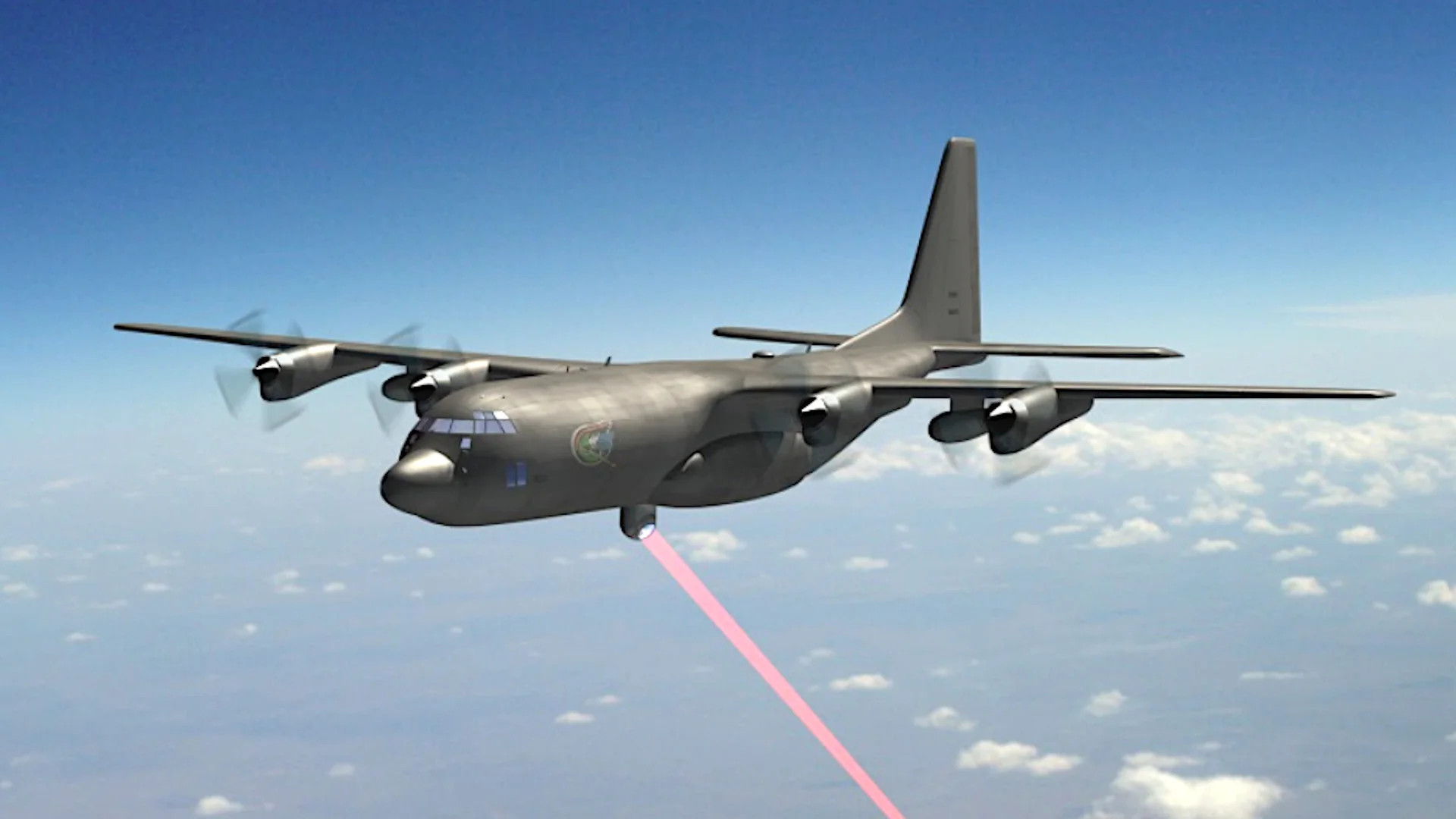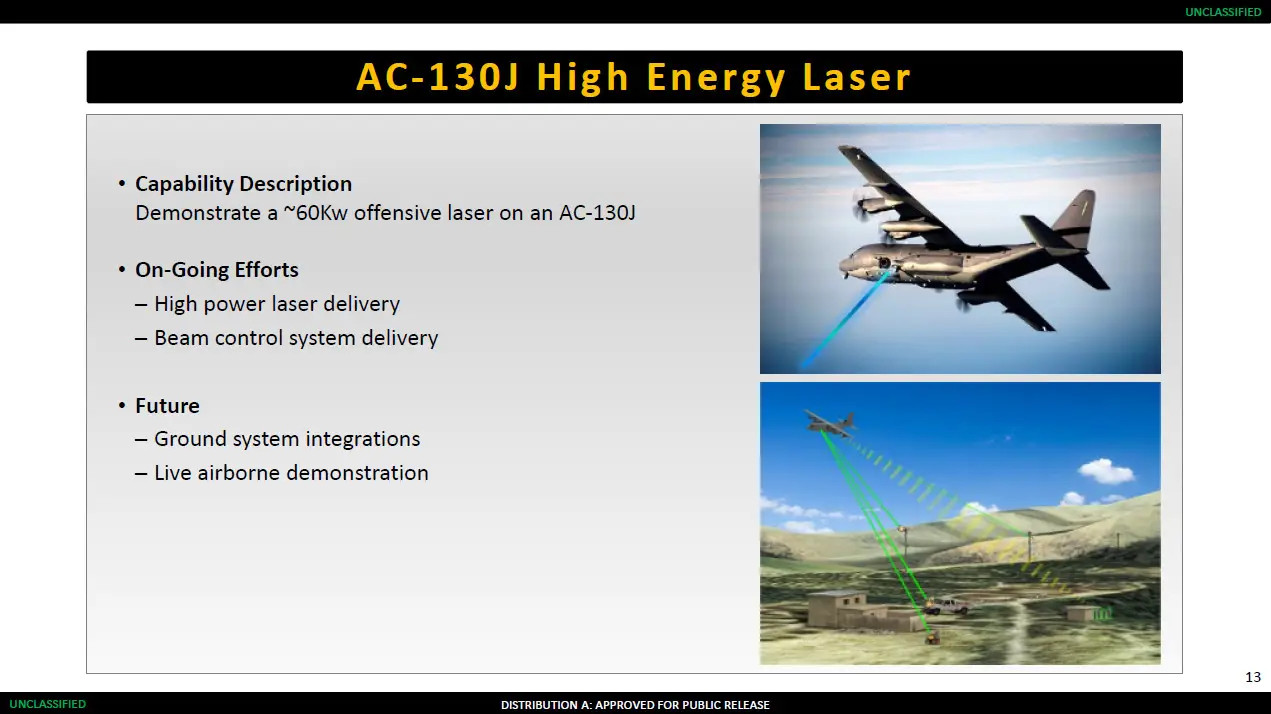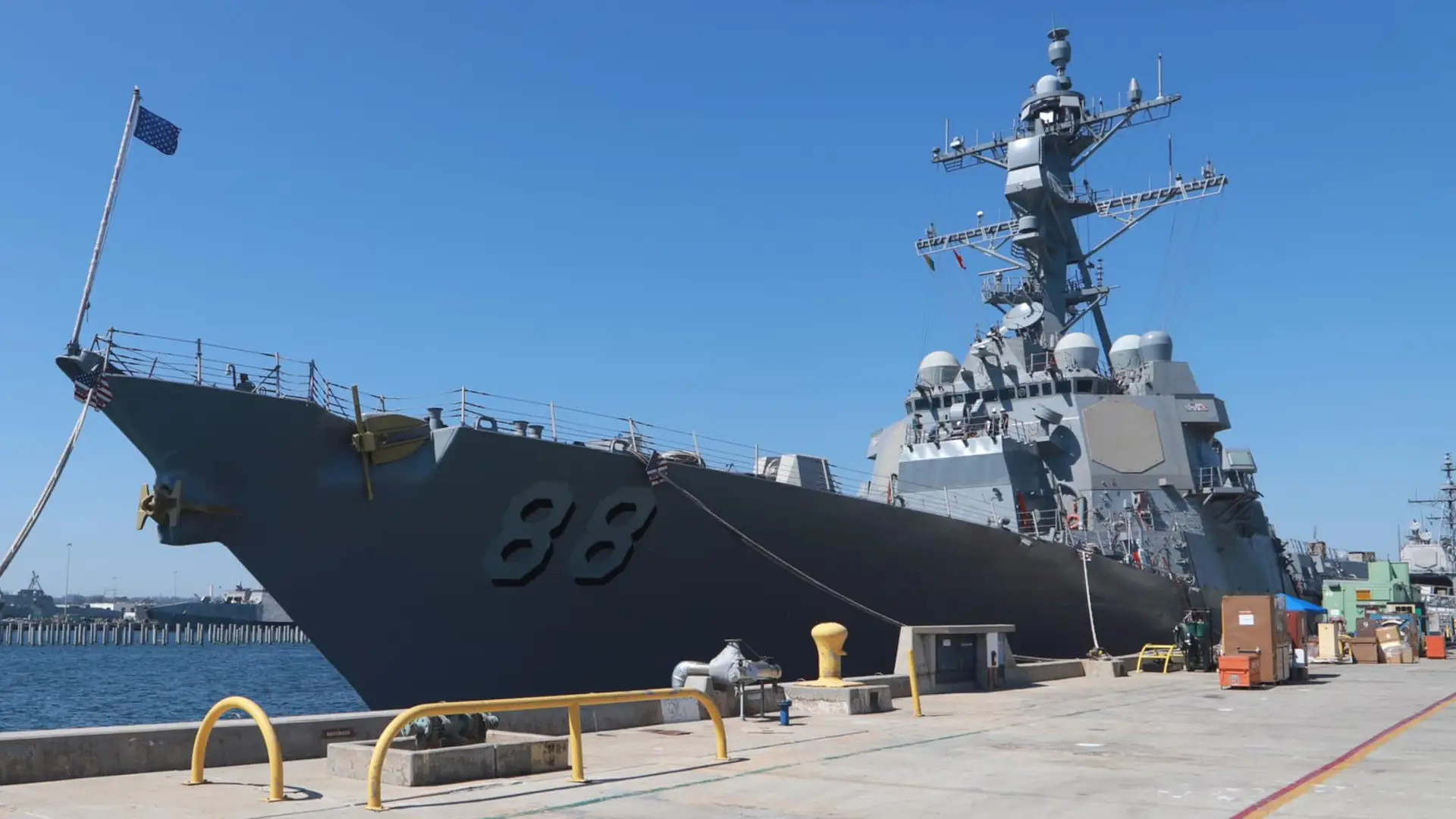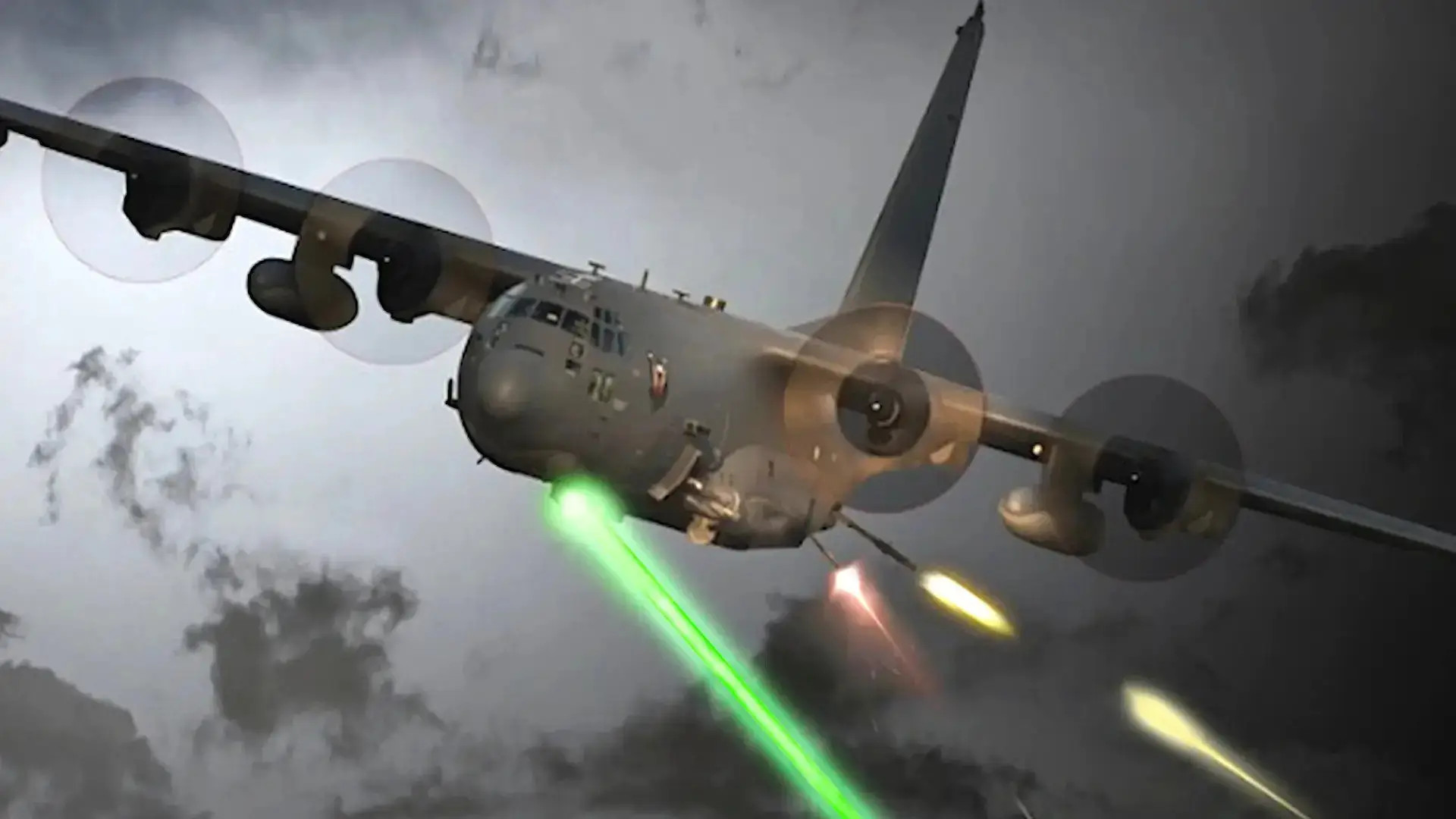The U.S. Air Force has scrapped plans to flight test an AC-130J Ghostrider gunship armed with a laser directed energy weapon after years of delays. The Airborne High Energy Laser program for the AC-130J had for a time looked set to become the U.S. military’s first operational aerial laser directed weapon. This all also comes amid a review of the AC-130J’s current and future planned capabilities, which could see the gunships lose their 105mm howitzers, as part of a broader shift away from counter-insurgency operations to planning for a high-end fight.
Air Force Special Operations Command (AFSOC) confirmed that there are no longer plans to test the prototype Airborne High Energy Laser (AHEL) system on an AC-130J and provided other details about the current state of the program to The War Zone earlier today.
“After accomplishing significant end-to-end high power operation in an open-air ground test, the AHEL solid state laser system experienced technical challenges,” an AFSOC spokesperson said in a statement. “These challenges delayed integration onto [the] designated AC-130J Block 20 aircraft past the available integration and flight test window.”

The original hope was flight testing of an AC-130J with the AHEL system would take place sometime in the 2021 Fiscal Year, but this schedule was repeatedly pushed back. In November 2023, AFSOC told The War Zone that a laser-armed Ghostrider was set to take to the skies in January of this year, something that clearly did not occur.
Lockheed Martin received the initial AHEL contract in 2019, the scope of which included supplying the laser source for the system and supporting the effort to integrate the system onto an AC-130J. The complete AHEL system also includes a beam director and other components.

“As a result, the program was re-focused on ground testing to improve operations and reliability to posture for a successful hand off for use by other agencies,” the statement added.
This is all further confirmed by the Pentagon’s 2025 Fiscal Year budget request, which was rolled out last week, and does not ask for any new funding for AHEL. Official budget documents say this is because the program is expected to close out in the 2024 Fiscal Year.
What “other agencies” might now be in line to benefit from the AHEL program’s work and the exact status of the 60-kilowatt class laser directed energy weapon system developed under the program are unclear. AFSOC directed further questions to U.S. Special Operations Command, which The War Zone has now reached out to for more information.
The U.S. Navy’s Naval Surface Warfare Center Dahlgren Division (NSWC Dahlgren) had already been deeply involved in the AHEL program. The Navy has been very active in the development and fielding of various types of shipboard directed energy weapons, including another 60-kilowatt class laser directed energy weapon called the High-Energy Laser with Integrated Optical Dazzler and Surveillance, or HELIOS. Lockheed Martin is also the prime contractor for that system.

The U.S. Army and U.S. Marine Corps have also been working to develop and field different types of air and ground-based directed energy weapons.
The Air Force has been working on at least one other aerial laser directed energy weapon in recent years, under the Air Force Research Laboratory’s (AFRL) Self-protect High Energy Laser Demonstrator (SHiELD) program. The SHiELD effort was centered around a podded system for tactical jets ostensibly intended to help defend against incoming missiles, though it would have the ability to engage other target sets. In the past, the stated goal was to begin flight testing of the SHiELD pod in 2025, but its current status is unclear.

The Air Force is pursuing other directed energy weapon programs, including for base defense use on the ground. Additional work is understood to be going on in the classified realm, including efforts tied to the larger Next-Generation Air Dominance (NGAD) initiative.
For the Air Force’s current fleet of 30 AC-130Js, the end of the AHEL program comes amid larger questions about the future of Ghostrider’s armament package and other current and future capabilities. There are growing signs that the Ghostriders are set to lose their 105mm howitzers as part of this reassessment of the aircraft’s capabilities.
“Initiate engineering analysis and development to remove the aft weapon system (105mm Gun), refit the aft section, and optimize crew workload in support of the United States Special Operations Command (USSOCOM) crew reduction initiatives,” is the plan for the AC-130Js in the 2024 Fiscal Year, according to the Pentagon’s latest budget request. The War Zone has reached out to AFSOC for further clarification.
The Air Force originally planned not to include a 105mm howitzer in the armament package for the AC-130J, which was originally focused more on the employment of precision-guided missiles and bombs than guns at all. The service subsequently changed course and had more recently been in the process of integrating improved howitzers onto the Ghostriders. That work came to a halt last year after the start of the capability review. As of last November, only 17 of the 30 AC-130Js had gotten this upgrade.

AFSOC has been taking this new look at the Ghostrider’s current and future planned capabilities in large part due to discussions about how AC-130Js might contribute to future high-end conflicts, especially one in the Pacific against China. AC-130Js, which are today primarily tasked with providing very close support to special operations forces on the ground, currently operate almost exclusively in permissive and semi-permissive environments and at night.
AHEL has been presented in the past as being ideally suited to supporting lower-intensity counter-insurgency-type missions.
“Without the slightest bang, whoosh, thump, explosion, or even aircraft engine hum, four key targets [an electrical transformer, the engine of a pick-up truck, communication equipment, and a parked drone,] are permanently disabled,” now-retired Lt. Gen. Brad Webb, then head of AFSOC, said in a 2017 interview with National Defense magazine, describing a notional mission for a laser-armed AC-130. “The enemy has no communications, no escape vehicle, no electrical power, and no retaliatory intelligence, surveillance, and reconnaissance capability. Minutes later, the team emerges from the compound, terrorist mastermind in hand. A successful raid.”
In line with all this, the Air Force is also looking to add a new active electronically-scanned array (AESA) radar to these gunships, “allowing the platform to detect, target, identify, and engage across a spectrum of threats at longer ranges and react with greater precision,” according to Pentagon budget documents. You can read more about the benefits of adding an AESA to the AC-130J here.
Other specialized C-130 variants belonging to AFSOC have been heavily involved in the testing of a palletized weapon system called Rapid Dragon. Rapid Dragon offers a way to readily transform existing cargo aircraft into launch platforms for AGM-158 Joint Air-to-Surface Standoff Missile (JASSM) cruise missiles and other stand-off munitions. SOCOM has previously expressed interest in the past in integrating precision-guided munitions with longer reach onto the AC-130, in part to help keep those aircraft away from increasingly capable enemy air defenses. A return to a focus on precision-guided munition employment when it comes to the Ghostriders could be important for ensuring their continued operational relevance.

Altogether, the exact mix of capabilities found on the AC-130Js looks set to significantly evolve in the near term. However, a laser directed energy weapon is no longer on the horizon for the Ghostriders.
Howard Altman contributed to this story.
Contact the author: joe@twz.com
